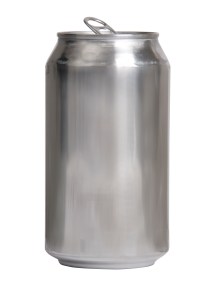Corey Baron and Peter Link sat together, last Thursday morning, at a round table in Evergreen’s Senior Resource Center. Unlikely lab partners, they were separated by less than 2 feet and more than half a century.
“How often do you eat green salad?” asked 11-year-old Corey, her freshly-sharpened #2 pencil poised over a lengthy questionnaire spread on the table in front of her.
“At least once a day,” said Peter, an active man who’ll turn 77 come November.
“What kind of snack foods do you usually eat?”
“Nuts and cashews, mostly, but I do have a fondness for chocolate.”
“My brother’s the same way,” said Corey, with a reassuring smile. “How well do you hear?”
“My wife thinks I’m going deaf, but you can just say ‘good.’”
Corey looked uncertain for a moment, but soldiered on. To her credit, Corey understood almost half of Peter’s uncomplicated jokes, or pretended to. A self-possessed girl with dark hair and a careful demeanor, she interviewed her aged friend for the better part of 20 minutes, delving into many parts of his past and present life.
A field-geologist by training and unrepentant local Curmudgeon by temperament, Peter was good-natured, deceptively youthful, and clearly delighted by his young interrogator. He answered all inquiries quickly, completely, and with as much humor as he thought Corey would tolerate.
Corey wasn’t asking all those questions just to be polite, although she was very polite. In that sunny room at the Yellow House, she and the rest of her Evergreen Middle School classmates from Laura Thompson-Beato’s sixth-grade gifted-and-talented class hoped that more than a dozen of the mountain-area’s oldest residents could help them unlock one of humanity’s most elusive secrets.
“They’re studying the secrets to living a long, healthy life,” Thompson-Beato said. “It’s part of an international study to find out why some people are able to stay healthy and vigorous when they’re over 80, 90, or even 100 years old. What they find out today will be pooled with information from around the world and could someday help people lead longer, better lives.”
The students’ friendly grilling was part of a special curriculum called the Blue Zone Program, named for those curious pockets around the globe where, for reasons unknown, local populations tend to longevity and folks remain vigorous even unto triple digits.
“I call the program ‘live long and prosper,’” Thompson-Beato laughed. “It’s hard to keep old age relevant to an 11-year-old. How much interest can they have in somebody who’s 80? They really get into the financial part of it, though. As far as they’re concerned, compound interest is the 8th wonder of the world. This is the first time we’ve done this, but I’m definitely going to do it again next year.”
Student Samantha Raeder spent a pleasant half-hour prospecting the bright nuggets of wit and wisdom collected over the years by Josephine, a gentle soul of 81. It was time well-spent for both.
“I was surprised she doesn’t exercise very much, but she’s pretty religious,” Samantha said. “I think it’s interesting that people who have deep religious faith tend to live longer. I want to be a Buddhist, but I haven’t really started yet.”
“This was a lot of fun,” said Josephine, looking at least 10 years younger than she had an hour before. “It sure takes me back to my younger days.”
Of course, each detailed questionnaire was simply prologue to the Big Question – what must a youngster do to ensure a long, healthy, happy life? Jackie McFarland, who just turned 80, still looks 60 and laughs like a 20-year-old, gave young Kelsey the 411.
“I told her she should be considerate of her elders and others, eat a balanced diet, and stay socially active,” Jackie said. “I also think it’s very important for kids to be responsible, especially today. Every action has consequences. That’s something my own grandchildren haven’t learned yet.”
Though Peter couldn’t offer Corey the secret to eternal youth, he presented her with plenty of solid counsel and a few surprises. Born at the dawn of the Great Depression, Peter walks several miles a day, splits his own firewood and plays softball on the semi-fearsome Curmudgeon squad. And he looked pretty energetic for a man who recently returned from an arduous exploration of Antarctica. Age and well-being, he told Corey, are mostly states of mind.
“I like that he thinks that your attitude is the most important thing,” Corey said. “That’s what I’ve always thought, and this just proves it.”
Perhaps most importantly, she discovered that she and Peter, despite the long reach of years between them, are more alike than she would have supposed.
“I learned that just because somebody’s old it doesn’t mean it’s weird to talk to them, and I don’t have to be nervous about it,” said Corey, seriously. “He’s a very nice man. He’s just a regular person.”













